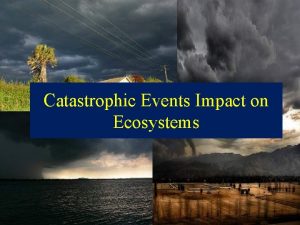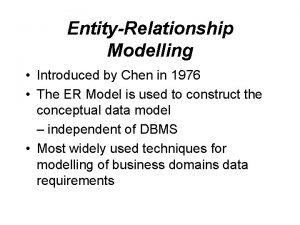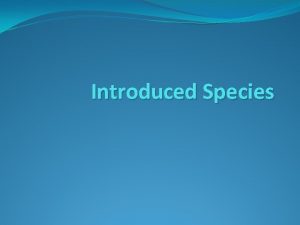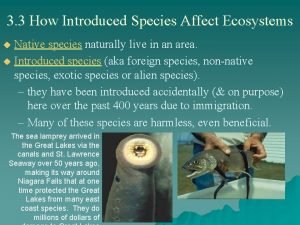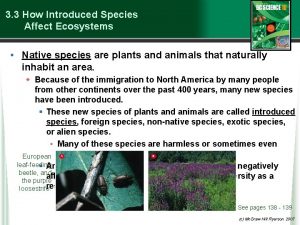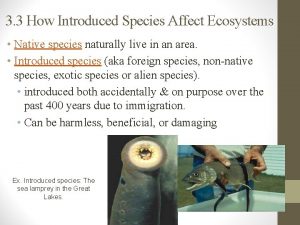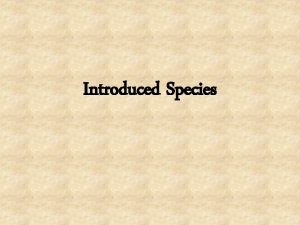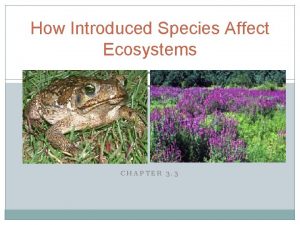3 3 How Introduced Species Affect Ecosystems Native









- Slides: 9

3. 3 How Introduced Species Affect Ecosystems • Native species are plants and animals that naturally inhabit an area. w Because of the immigration to North America by many people from other continents over the past 400 years, many new species have been introduced. § These new species of plants and animals are called introduced species, foreign species, non-native species, exotic species, or alien species. • Many of these species are harmless or sometimes even European beneficial. leaf-feeding § An invasive species, such as purple loosestrife, negatively beetle, and affects native species and often reduces biodiversity as a the purple result. loosestrife. See pages 138 - 139

The Impact of Introduced Species • Invasive species often take advantage of their new habitat. w They may have no predators, are aggressive competitors, and reproduce quickly. w Competition: while the native species have an established balance, the The sea lamprey invasive species can throw off this balance. w Predation: if the invasive species is a predator, it may have a huge advantage, as the native species may have no methods to survive. w Disease and parasitism: by weakening certain species, a micro-organism invading an ecosystem can drastically alter the entire ecosystem and the niches within it. w Habitat alteration: some invasive species can change the physical structure of the ecosystem by digging, burrowing, blocking sunlight, or changing the chemistry of the ecosystem. See pages 140 - 141

Australian Cane Toads The Cane toad was introduced to Australia to control cane beetles, pest insects that destroy sugar cane crops Toads did not control cane beetles. Instead they have become an ecological disaster in Australia.

• Can weigh up to 3 kgs • Adults can reach lengths of up to 40 cm • Females breed once a year, laying up to 30 thousand eggs • Very hard for predators to kill. w Toxins present on skin kill native predators w Toxic tadpoles kill aquatic predators Cane toad killing a snake. 什么? ! That’s not right!!!

• They were introduced to Queensland, Australia in 1935 • Now they cover 1 million square kilometers



Invasive Species in British Columbia Eurasian Milfoil Norway rat See page 142 American Bullfrog European Starling (c) Mc. Graw Hill Ryerson 2007

Saving an Ecosystem Under Siege • It often takes human intervention to save established ecosystems. w The Garry Oak Ecosystem Recovery Team (GOERT) is trying to save several areas of the Garry oak ecosystem in British Columbia. w 95 percent of the original ecosystem has been lost to urban Garry oakby ecosystem development, and the remaining 5 percent is threatened invasive species. w Garry oak trees are a keystone species. w Scotch broom, English ivy, grey squirrel, gypsy moth larva and other plant species are its biggest threats. w GOERT has representatives from many groups including the British Columbia government, First Nations, conservationists, scientists, and businesses. w Garry oak forests may be better suited to survive in See page 143 the future. (c) Mc. Graw Hill Ryerson 2007
